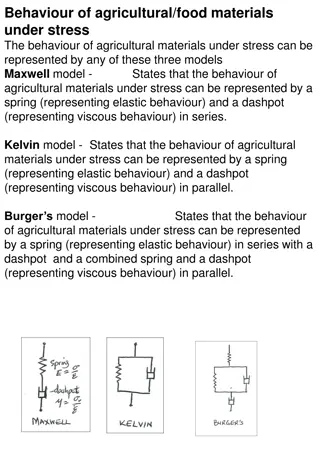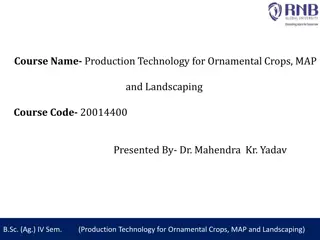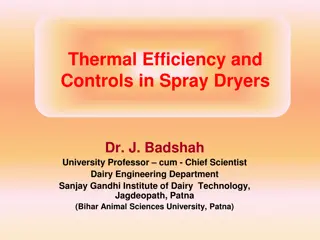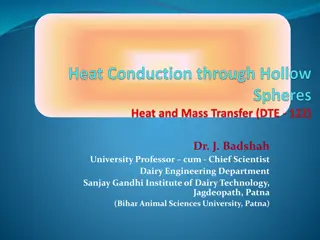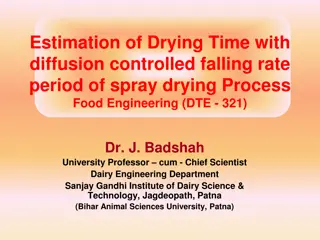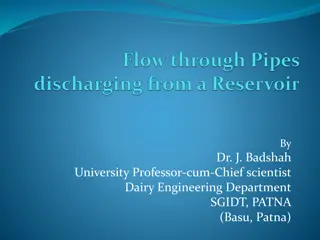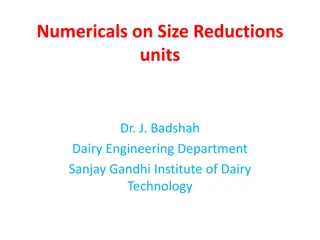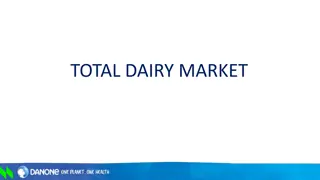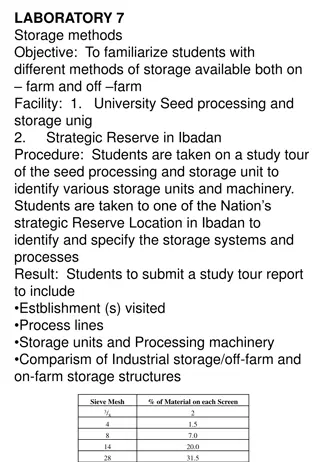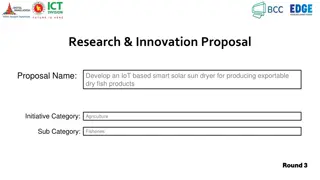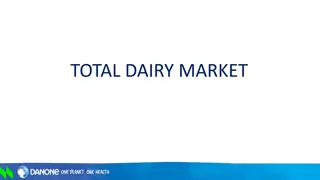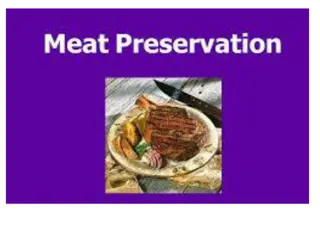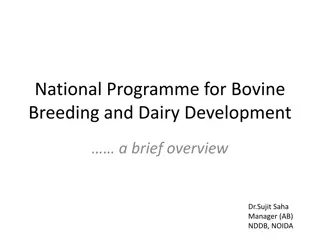Dairy Process Engineering Numericals: Evaporator and Drying
Explore numerical examples in dairy process engineering focusing on calculations related to single-effect evaporators, triple-effect evaporators, and drying processes. Dive into heat energy requirements, boiling points, drying time calculations, and more. Enhance your understanding of the practical applications of evaporators and dryers in dairy processing.
Download Presentation

Please find below an Image/Link to download the presentation.
The content on the website is provided AS IS for your information and personal use only. It may not be sold, licensed, or shared on other websites without obtaining consent from the author. Download presentation by click this link. If you encounter any issues during the download, it is possible that the publisher has removed the file from their server.
E N D
Presentation Transcript
NUMERICALS ON EVAPORATOR AND DRYING Dairy Process Engineering (DTE - 212) Dr. J. Badshah University Professor cum - Chief Scientist Dairy Engineering Department Sanjay Gandhi Institute of Dairy Science & Technology, Jagdeopath, Patna (Bihar Animal Sciences University, Patna)
Numericals on Single Effect Evaporators 100 kg of liquid food at 45 C is to be concentrated from 10 % TS to 20% TS in a single effect evaporator by boiling at 50 C. The latent heat of vapourization at 50 C is 2260 Kj/kg and specific heat of liquid food is 4.2 KJ/Kg C. calculate the amount of heat energy required. Solution: Total Mass balance : F = V + P 100 = V + P Total Solid balance : F xf= P xp 100 x 0.1 = P x 0.2 P = 50 Kg and V = 100 50 = 50 kg Amount of heat energy required: Q = F Cp(T2 T1) + V L = 100x4.2x (50 -45) +50x2260 = 115100 KJ :
Numericals on Triple Effect Evaporator In a triple effect evaporator, the steam temperature in first effect is 108 C and boiling point of liquid in the last effect is 52 C. The overall heat transfer coefficients are 2500, 2000, and 1000 kcal/ h m2 C in first, second and third effects respectively. Determine the boiling point of liquid in first and second effect. Solution: Total temperature drop T = 108 -52 = 56 C, and let Tb1, Tb2 and Tb3(i.e. 52 C) are boiling temperatures in three effects. Assume q1= q2= q3and A1= A2= A3 U1A1 T1= U2A2 T2= U3A3 T3 T2= T1U1/ U2= T1x 2500/ 2000 = 1.25 T1 T3= T1U1/ U3= T1x 2500/ 1000 = 2.5 T1 T = T1+ T2+ T3 56 = T1+ 1.25 T1+ 2.5 T1= 4.75 T1 T1= 11.8 C Therefore, Ts Tb1= 11.8 i.e. 108- Tb1=11.8 and Tb1= 96.2 C and T2= Tb1- Tb2i.e. 1.25 x 11.8 =96.2 - Tb2 Tb2= 81.5 C.
Numerical on Drying Calculate the time required to dry a food material from 80% m.c. (w.b.) to 20% m.c. (w.b.) in a tray dryer with a loading rate of 10 kg/m2. The food is dried from one side only. The critical m.c. of food is 45% (w.b.). The convective heat transfer coefficient is 6.31 W/m2. C. The dry bulb temperature and wet bulb temperature of air are 60 C and 30 C respectively. The velocity of air is 10 m/s and density of air is 1 kg/m3. The latent heat of vapourization at 30 C is 2430 KJ/Kg. Solve it: Formula mw/A = h (TA Tw)/ HL Nc= mw/A / Solid load per m2 And Drying Time = wo wc/Nc+ wc/Ncln wc/w
Numericals to be solved The constant drying rate for a material is 0.15 kg water/ kg dry matter. Min and has water activity of one at moisture content greater than 1.10 kg water/kg dry matter. Calculate the total drying time for the product to dry from an initial m.c. of 75^ (wb) to a final m.c. of 8 % (wb). A 40 kg syrup contains 20 wt% sucrose. Citric acid is added into the syrup such that its concentration in the resultant syrup is 3 wt%. Calculate the amount of citric acid added to the syrup. (Answer: 1.24 kg) A single effect long tube evaporator has ten tubes each of 2.5 cm diameter and 6 m length. It concentrates pineapple juice from 18 Brix to 23 Brix. The feed rate into the evaporator is 557 kg/hour at the boiling point of 70 C (L = 2333.82 KJ/kg). Neglecting boiling point rise, calculate the overall heat transfer coefficient in Watt/m2K for 12 C temperature gradient across the tube walls. (Area = n dl). (Answer = 1387.16 )





